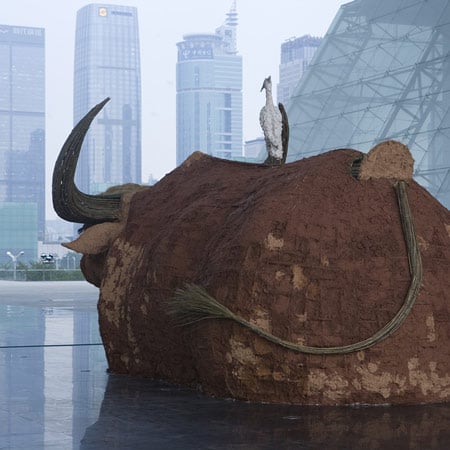
Shenzhen & Hong Kong Biennale photos
Here are some more installations on show at the Shenzhen & Hong Kong bi-city Biennale of Urbanism/Architecture in China this week, including work by Beijing studio MAD, Japanese architect Sou Fujimoto and Los Angeles office Ball Nogues.
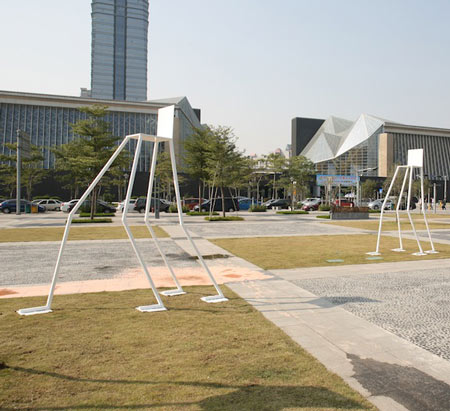
Above: Walking Chairs by Sou Fujimoto. Top: Snow Bull Station by Rigo 23
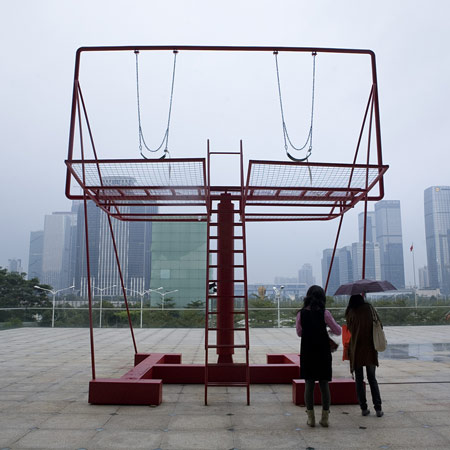
Above: The Unbearable Lightness of Being by Mésarchitectures. More about this project in our earlier story.
The theme of the biennale is City Mobilization.
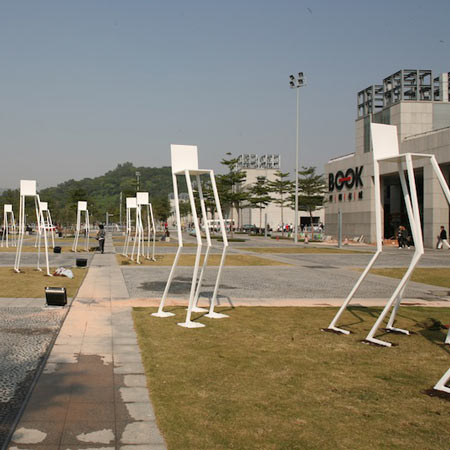
Above: Walking Chairs by Sou Fujimoto
The biennale began on Sunday 6 December and continues until 23 January 2010.
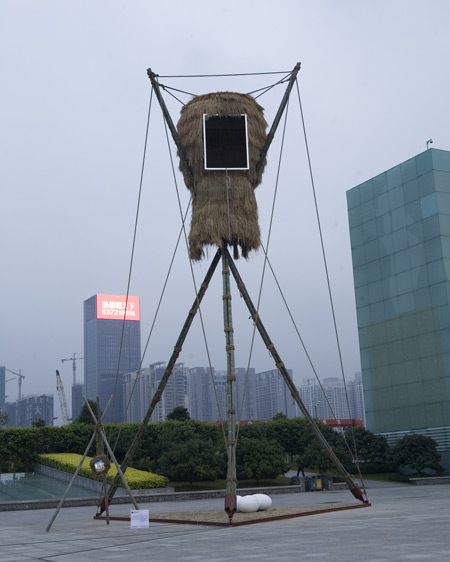
Above: Creature by Triptyque
Photographs are by Sun Xiaoxi, courtesy of Approach Architecture Studio.
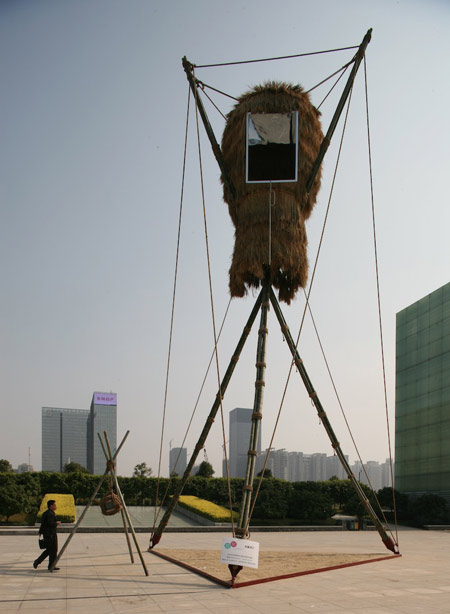
Above: Creature by Triptyque
Here's some text from biennale curator Ou Ning:
--
City Mobilization - Towards Another Kind of Biennale
As a young biennale with only two previous installments (in 2005 and 2007, respectively), SZHKB has invented an innovative, dual-city mode of operation which may be summarized as “Two Cities, One Biennale”.
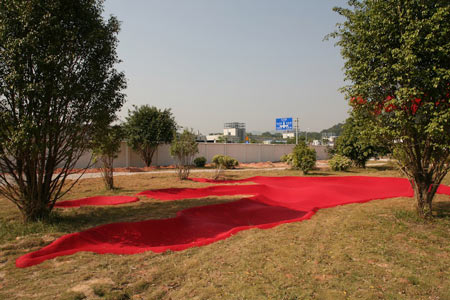
Above: Footprints in the Square by MAD
To focus not only on architecture but also urbanism means to have a very open vision in terms of the biennale’s content; practically any topic, opinion and creation related to “city” can be considered. As the inhabitants and users of the city, the residents themselves should be able to have their voices heard, and SZHKB is keen on engaging them, either as participant or audience.
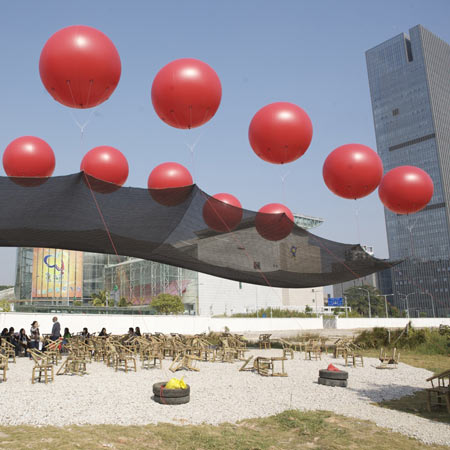
Above: With the Wind by Jiakun Architects
A “Citizen Participation” section was launched in the first SZHKB for the purpose of inviting and discovering grass-roots creativity by the citizens themselves, who are encouraged to propose works to be exhibited in the same space and exhibition framework with professional architects, urban researchers and artists.
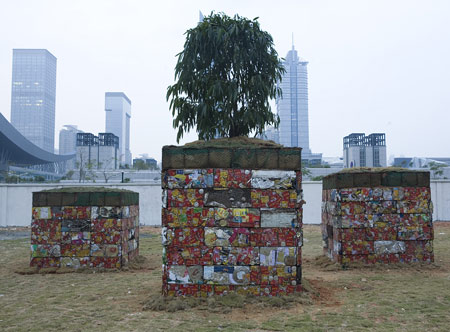
Above: LOT-US PROBES by LOT-EK
This groundbreaking approach has torn down the professional barrier set up by traditional biennales, thus lending a democratic tinge to the entire SZHKB exhibition and enterprise.
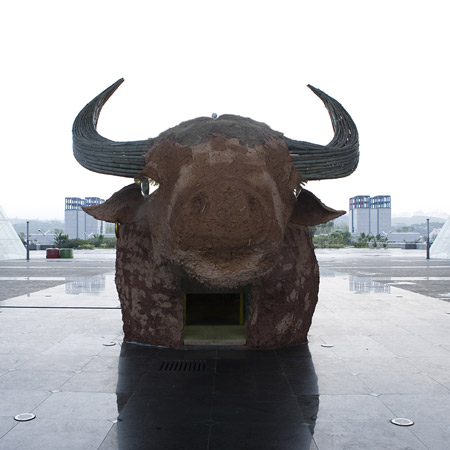
Above: Snow Bull Station by Rigo 23
In other words, there is the possibility for another kind of biennale besides the one reliant upon visual spectacle. A biennale can be a meeting hall, or social action, or even a political event.
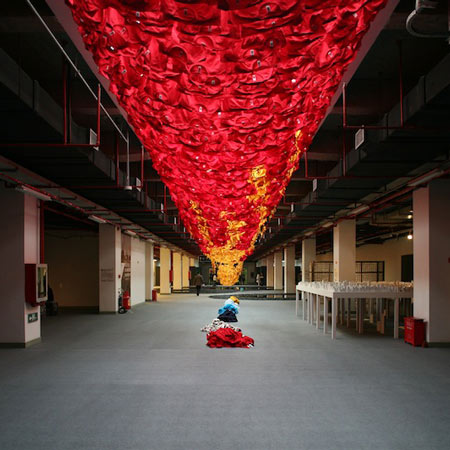
Above: Built to Wear by Ball Nogues
It can be a city-wide carnival, an entertainment gala that engages all citizens. It doesn’t have to happen in a certain museum or be limited to one place, rather, it can turn the whole city into an exhibition venue, or even develop other cities into sub-venues. It does not simply attract people from around the world to Shenzhen and Hong Kong, it helps to organize the citizens of Shenzhen to visit other participating cities. The key to all these propositions lies in one word: mobilization.
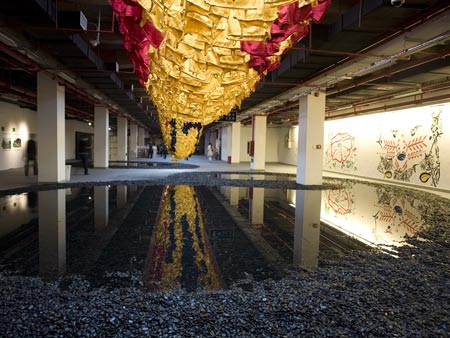
Above: Built to Wear by Ball Nogues
The 2009 SZHKB is organized around the theme of “City Mobilization”. The aim is to test the possibility of large-scale, effective social mobilization in a time that lacks centralized force, spiritual solidarity and practical organization. The design of contemporary cities are not only about the functional planning of streets and blocks and the arrangement of buildings, rather it is about the organization and coordination of the people living in and events occurring inside these cities and spaces, as well as the elaborate distribution of their interests.
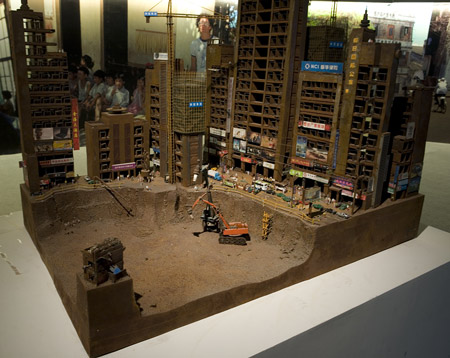
Above: Demolition Relocation by Liu Xiaoliang
Urban designers and architects have long been focusing on the building of physical space, and are seldom attentive to the social structures, community interests and political realities behind these cities and buildings. Eventually, they succumb to the interests of state power or become subsumed by the profit-oriented capitalist machinery, paying little heed to the sustainability and the human dimension of their creations.
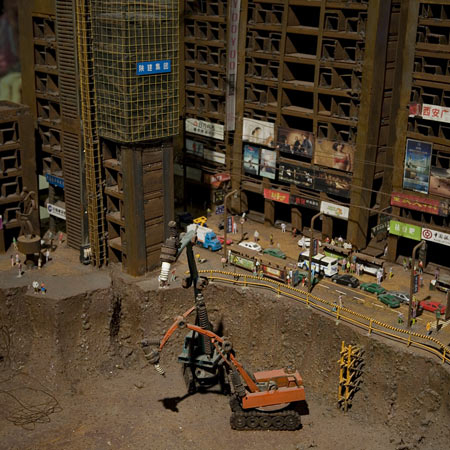
Above: Demolition Relocation by Liu Xiaoliang
For the third SZHKB this year, we aim to mobilize urban designers and architects to reconsider their social identities and professional roles, moreover, we also want to mobilize artists, authors, musicians, filmmakers, thinkers, social activists, politicians and citizens to offer their intellectual support. Let us revitalize the spiritual foundation of our society in a spiritually fragile time, and build a foundation, though rooted in the city, that is poised to benefit the countryside and territories beyond.
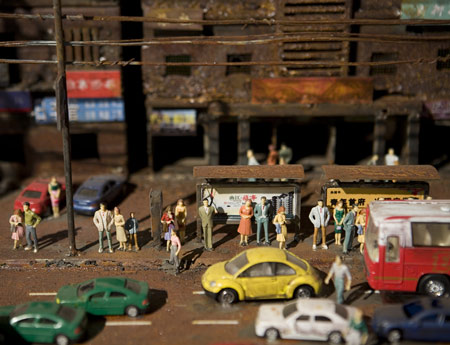
Above: Demolition Relocation by Liu Xiaoliang
A biennale should not simply be an exhibition for the high and mighty, nor should it be only an incubator of new economic achievements. Apart from being the business card of a city, it should attempt to regain intellectual criticality, invoke the public’s desire for action, and take up the responsibility of advancing social progress. Shenzhen and Hong Kong, the twin cities of the Pearl River Delta at the southern tip of China, are well known for being the engine rooms of China’s “Open Door Policy” reforms some thirty years ago. With its proximity to Hong Kong, Shenzhen has been the cornerstone of economic experiments that have contributed significantly to China’s current astonishing social transformation.
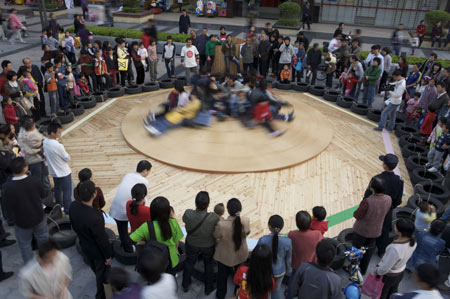
Above: People's Roulette by FRANCESCHINI and ALLENDE/Futurefarmers
A biennale co-hosted by two such cities was born with a kind of audacity that defies accepted boundaries, a kind of chutzpah that challenges and provokes. We hereby sincerely invite you to Shenzhen and Hong Kong to witness the next page in the history of these two remarkable cities, and to take part in our enterprise to reinvent the shared values of our time. Let’s get mobilized, let’s be cutting-edge, provocative and critical. Together, we will usher in a warm and sunny winter in South China this year.